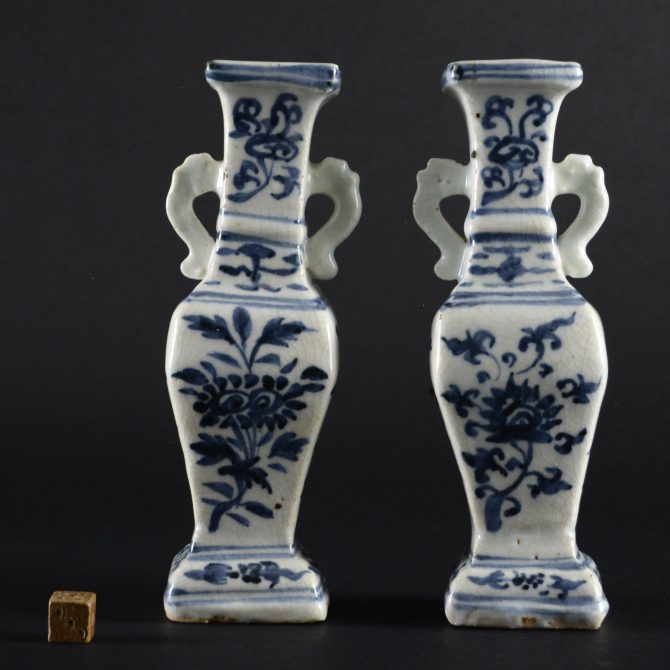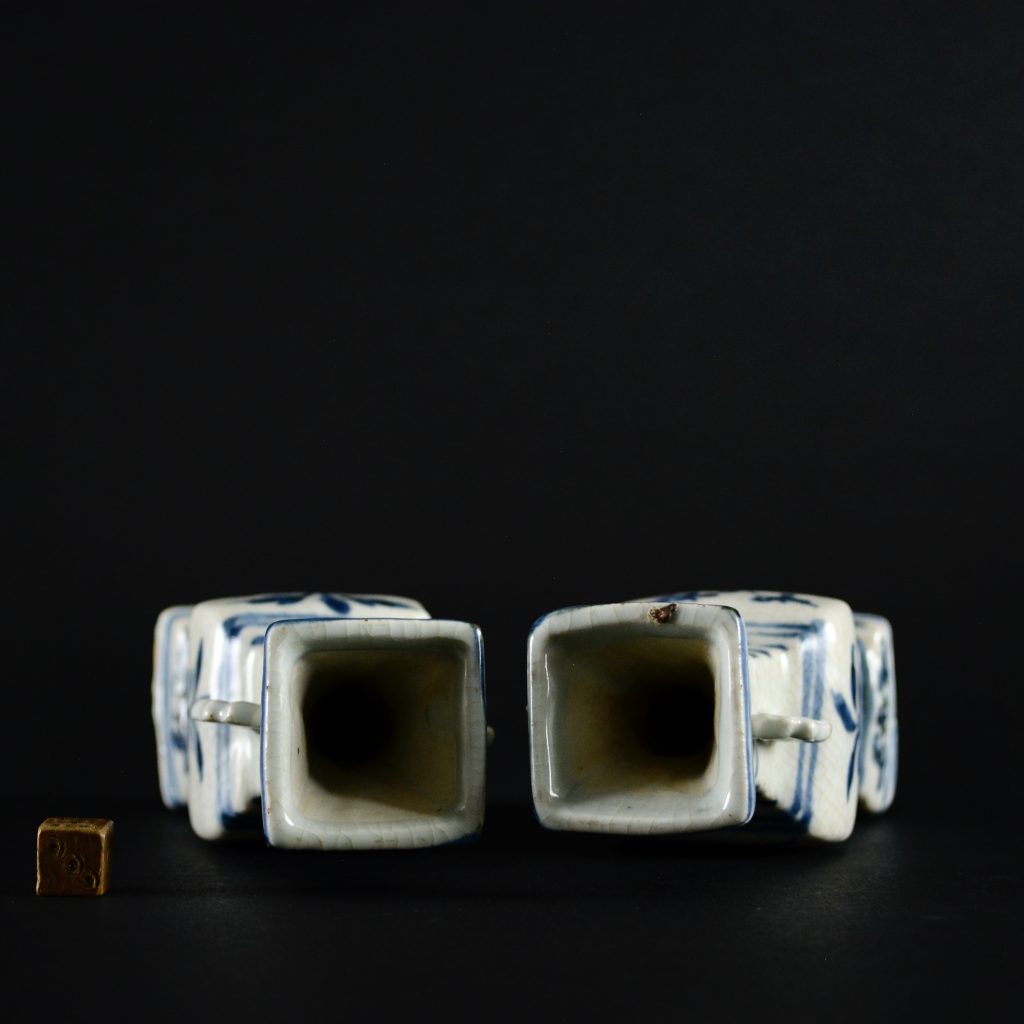
A Pair of Ming Interregnum Blue and White Porcelain Vases, Mid-15th Century
A Pair of 15th Century Ming Vases, Ming Interregnum, Zhengtong to Tianshun 1436 – 1464, Jingdezhen Kilns, Jiangxi Province. This pair of Ming Interregnum vases are of square form with a baluster body and flared neck and base. The decoration is in a rather uniform rich cobalt blue with a hint of black-grey. The design is of flowering lotus and Lingzhi and peaches. The handles, vaguely resembling dragons, are made using a one-piece mould, so they are moulded on one side only with the reverse being smooth. The front and the back of these vases displays one moulded side and one smooth. The square bases are recessed, they are roughly countersunk with blade marks clearly visible.
SOLD
- Condition
- No damage. Firing faults - one vase leans a bit and wobbles if pushed. A few pieces of kiln-grit in the glaze, figure marks show on the lower edge of the glaze.
- Size
- Height : 16.3 and 16.4 cm.
- Provenance
- N/A
- Stock number
- 25994
- References
- For a very similar pair of Ming Interregnum vases are in the British Museum, see : Catalogue of Late Yuan and Ming Ceramics in the British Museum.(Jessica Harrison-Hall.The British Museum Press, 2001. ISBN 0-7141-1488-X.) page 153, items 5:11 and 5:12.
Information
A Pair of Very Similar Ming Interregnum Vases in the British Museum.

Harrison-Hall 2001:
Contemporary bronze altar vessels inspired the form of these porcelain vases. A larger faceted bronze altar vase in the Victoria and Albert Museum, London, has six sides but is similar to the present porcelain examples in terms of having dragon-headed handles, pedestal bases and tiered construction. Two blue-and-white porcelain vases of this square form with similar handles were excavated from the tomb of Mme Cai (1405-41), wife of the scholar-official Wang Xi (1405-52), buried with her husband and his other two wives at Pingwu county, Sichuan province, in 1464.
The form of these vases and to some extent their decoration were replicated in porcelain decorated in the 'fahua' overglaze palette of turquoise, ink blue and white at Jingdezhen in the mid fifteenth century (see BM 1930.0719.5 and 6).











